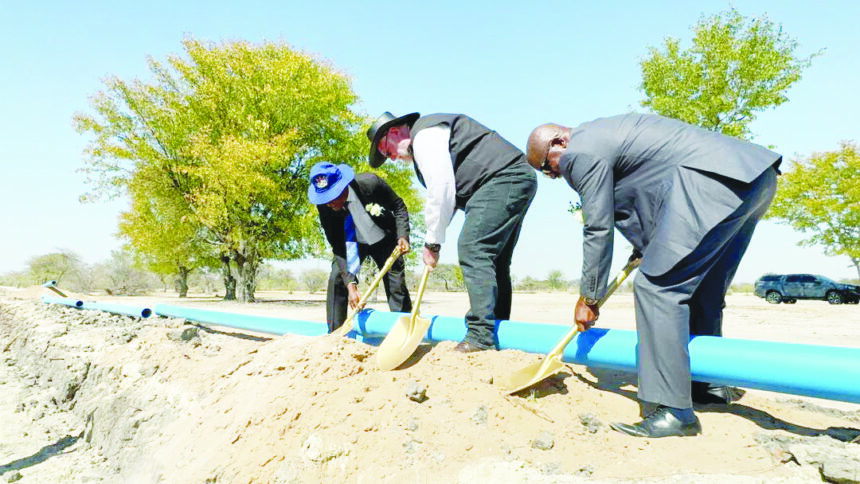OSHANDI – Water minister Calle Schlettwein said the Ohangwena II Aquifer can supply significant amounts of water to areas in the northern part of Namibia.
He made the remarks during the groundbreaking for the Ohangwena II Wellfield Water Supply Schemes here on Saturday, saying government through NamWater thus initiated the Ohangwena II Wellfield Project.
The Ohangwena ll Aquifer project will be undertaken at a cost of N$250 million, which was availed by the government through the African Development Bank’s Namibia Water Sector Support Programme.
Schlettwein said the AfDB provided a loan of about N$1.8 billion which is being utilised for projects such as the Ohangwena II Aquifer, the Oshakati new purification plant, Rundu’s new purification plant and many other related projects that are being implemented by the ministry.
He indicated that these funds do not cover all costs and the government added a further N$1.5 billion to ensure successful completion of the projects.
“This project will bring about reliable access to safe drinking water for the areas between Omafo-Eenhana and Omakango-Onambutu-Eenhana, aligning with the government’s infrastructural development goals to foster socio-economic growth for the country and the project beneficiaries,” he added.
He explained that the project aims to add the Ohangwena Aquifer as the second primary source of the northern water supply system and enhance the water supply infrastructure, improving their ability to match the growing demand.
“NamWater is tackling water scarcity in the eastern areas of Eenhana and portions of the Oshikoto region,” he said.
He added that the Ohangwena Climate Resilient Water Supply Project seeks to establish numerous smaller decentralised systems for abstraction, treatment and distribution across the project area, along with the construction of the Omundaungilo-Omutsegwonime Bulk Pipeline project.
He noted that this component adds a third primary source, namely the Tsumeb Karst Aquifer to the integrated water supply system.
Further, Schlettwein said the Oshakati Purification Plant and the Kunene River have been the only primary source of fresh water from which they were supplying bulk potable water to several schemes in the Central Northern Water Supply Area (CNWSA).
This single source approach reached its full supply capacity and now needs to be augmented as existing schemes like the Omafo-Eenhana and Omakango-Onambutu schemes face immense pressure to meet rising water demands.
“During peak water-use periods, Eenhana town cannot any longer be supplied with sufficient water due to several rural water supply branch lines, water points, and numerous private off-takes between Omafo and Eenhana,” he said.
Schlettwein noted that the government remains committed to making water supply a reality for everyone, despite limited resources. -Nampa


